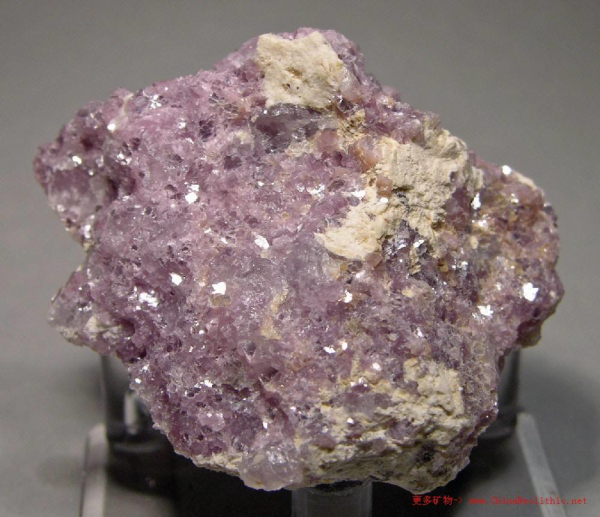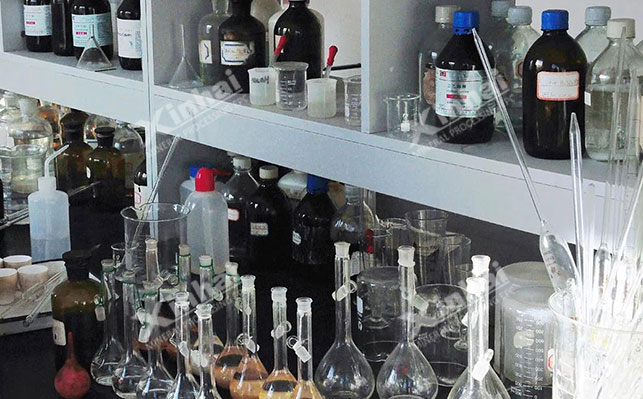Lithium exists on the earth in the form of salt lakes, spodumene ores and lepidolite ores. Lithium mica is a basic aluminosilicate of potassium and lithium, which belongs to one of mica minerals. Like spodumene, it is also a mineral form of lithium resources in nature. At present, the main lithium extraction technologies from lithium mica include sulfuric acid method, sulfate roasting method, limestone method, chlorination roasting method, pressure boiling method, alkali dissolution method, etc.

Sulfuric acid method is one of the main methods for extracting lithium from lepidolite, including sulfuric acid roasting and immersion method and sulfuric acid leaching method.
Sulfuric acid roasting and impregnation method: because the roasting temperature is too high, resulting in high energy consumption, and the extraction rate of lithium is also low, it has gradually been replaced by salt roasting method.
Sulfuric acid leaching method: this method avoids high temperature roasting, with low energy consumption and reaction temperature. It is a relatively efficient lithium extraction process with small waste residue. However, the method requires the fineness of lepidolite, which can meet the requirement of leaching rate after ball milling to a certain fineness, and the reaction time is relatively long; During the leaching process, a large amount of aluminum will be dissolved, and a large amount of aluminum needs to be removed, which will cause a large loss of lithium; After the reaction is completed, more sulfuric acid remains, which requires a large amount of alkali to neutralize the residual acid.
Lithium mica needs to go through three reaction stages in sulfuric acid medium:
Phase I: hydrogen ions in solution reach the surface of orthosilicic acid film layer through diffusion, penetrate the orthosilicic acid film layer, and contact with lithium mica surface particles;
The second stage: hydrogen ions react with lithium mica particles to generate soluble lithium sulfate, sodium sulfate, potassium sulfate, aluminum sulfate, etc;
The third stage: the soluble sulfate enters the solution through diffusion through the orthosilicic acid film layer to the boundary.

Sulfate roasting method is mainly to mix lithium mica with sulfate such as potassium sulfate, sodium sulfate or calcium sulfate, and then calcine them at high temperature. Its principle is high temperature ion replacement, that is, use high temperature to destroy the mineral phase structure of lithium mica, so that the structure of lithium ore becomes loose. Sodium, potassium, etc. in sulfate and lithium ions next to aluminosilicate core in lithium mica have a high temperature replacement reaction to replace lithium and transform it into soluble lithium sulfate, The lithium is extracted by leaching with water or dilute acid and filtering.
This method is suitable for processing various lithium ores. The aluminum in the minerals can hardly be replaced during separation, with high leaching rate and simple process. However, to ensure the lithium leaching rate, more K2SO4 will be consumed, and more fluoride and sulfide waste gas will volatilize in the high-temperature roasting process, causing serious environmental pollution.
The process of extracting lithium by limestone beneficiation is to mix limestone and lepidolite according to a certain mass ratio, grind them in a ball mill to a certain fineness, and then calcine them at 800~900 ℃ for leaching to obtain lithium containing solution. The process is simple, but the leaching rate of lithium mineral is low and the amount of limestone is large.
The chlorination roasting method is to mix lithium mica with chlorides such as sodium chloride and calcium chloride in a certain proportion, grind them in a ball mill, and then calcine them at a certain temperature to convert lithium and other valuable metals in lithium mica into soluble chlorides, and obtain lithium containing solution after leaching. Chlorination roasting method includes high temperature roasting and medium temperature roasting.
High temperature chlorination roasting: roasting is carried out at a temperature higher than the boiling point of alkali metal chlorides. During roasting, alkali metal chlorides volatilize in gaseous form and are separated from impurities;
Medium temperature chlorination roasting: roasting at a temperature lower than the boiling point of alkali metal chlorides, and then leaching with water to obtain a solution containing alkali metal chlorides.
This method has the advantages of high conversion rate of lithium, short reaction time, high recovery rate of alkali metal and less waste residue. However, chlorine ion has serious corrosion on instruments and equipment during roasting.
To extract lithium minerals by pressure boiling, the lithium ore is first calcined to defluoride, so as to transform the mineral phase, and then wet milled with sodium carbonate in a certain proportion, and then reacted at a pressure greater than 200 ℃ and 0.2~2MPa. Li ions are replaced with Na ions, and carbon dioxide is introduced into the water leaching slurry to convert lithium carbonate into soluble lithium bicarbonate. Lithium bicarbonate solution is obtained after solid-liquid separation, The lithium carbonate product is obtained after heating and decomposition.
The process flow of this method is simple, the material flow is small, the equipment corrosion is small, and the energy consumption is low. However, the recovery rate of lithium mineral is low, the reaction conditions are harsh, and it needs to be leached under high temperature and pressure, and more carbon dioxide gas is consumed.
Alkali dissolution extraction of lithium ore is to mix the concentrated solution of sodium hydroxide with lithium mica, react under a certain temperature and pressure, so that lithium mica is decomposed by concentrated alkali to generate a mixed solution of aluminate and silicate. Then, cation exchange resin is used to exchange lithium, potassium and other alkali metal ions in the mixed solution into the resin, and dilute sulfuric acid solution is used to replace lithium and potassium ions in the resin to obtain lithium, potassium and other alkali metal salt solutions, Lithium is precipitated out in the form of lithium carbonate with concentrated sodium carbonate solution to extract lithium ore.
This method can almost completely dissolve lithium mica, and the extraction rate of lithium is close to 100%, but it is difficult to recycle the concentrated alkali waste liquid.
The technology level of the mica lithium extraction process has been continuously improved, and the cost has been effectively controlled, which has greatly increased the profit margin of investors. Moreover, the current international market demand for lithium metal is also very large, so there is no need to worry about the market. Are you also interested? If you need to extract lithium from mica, please contact Xinhai Mining!